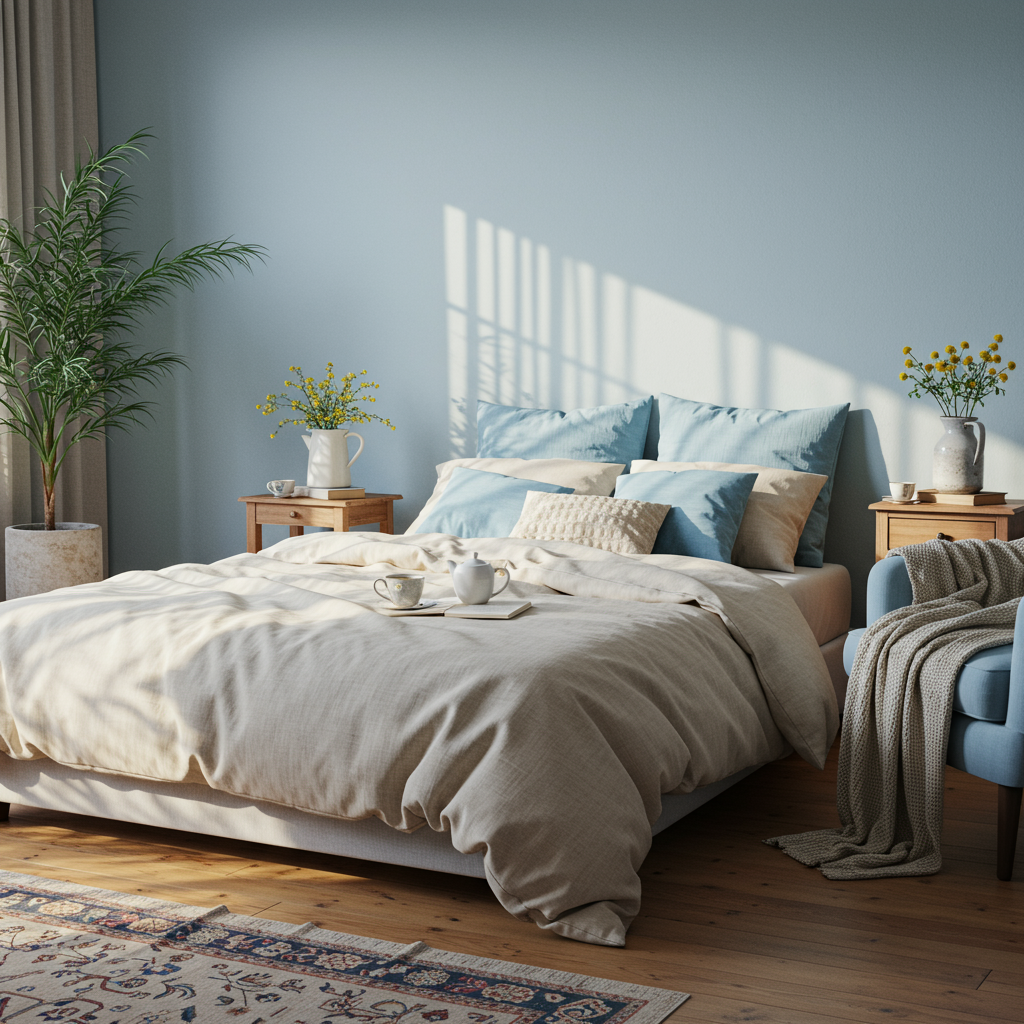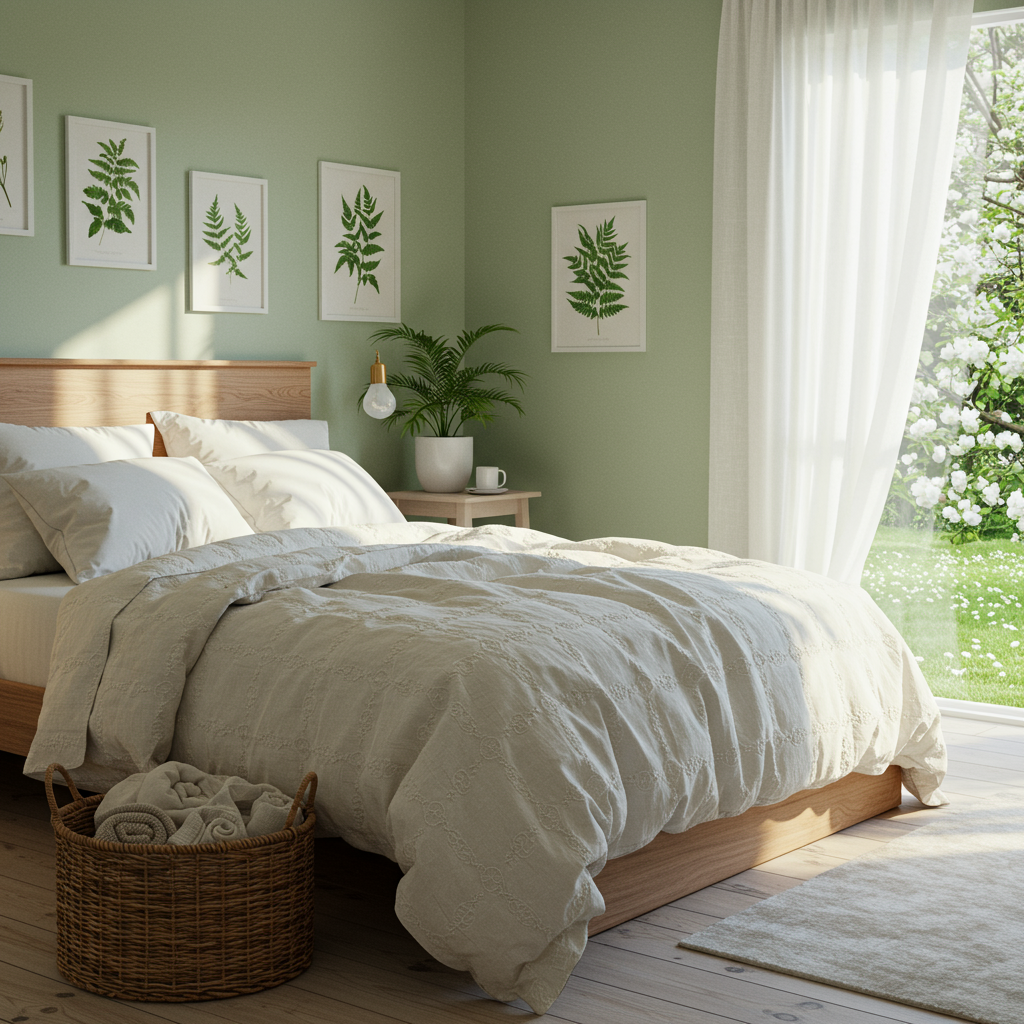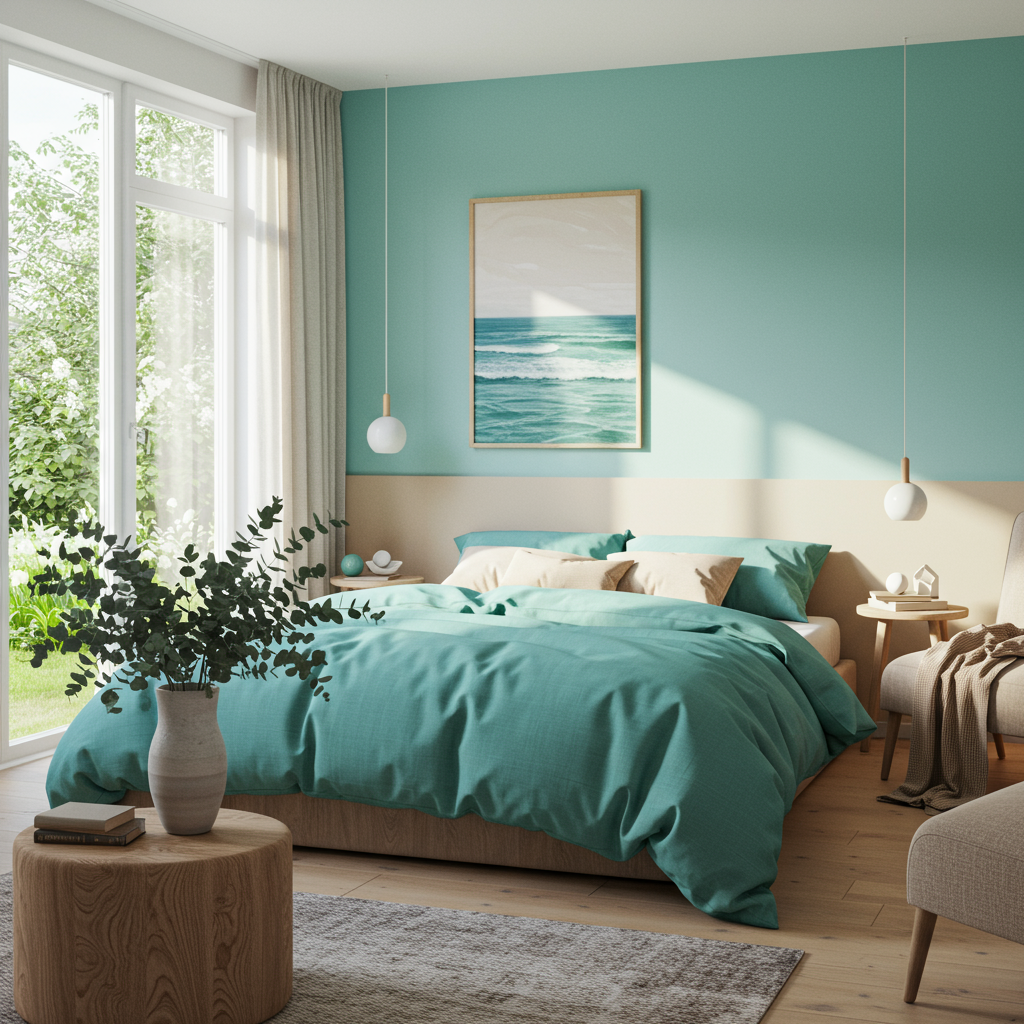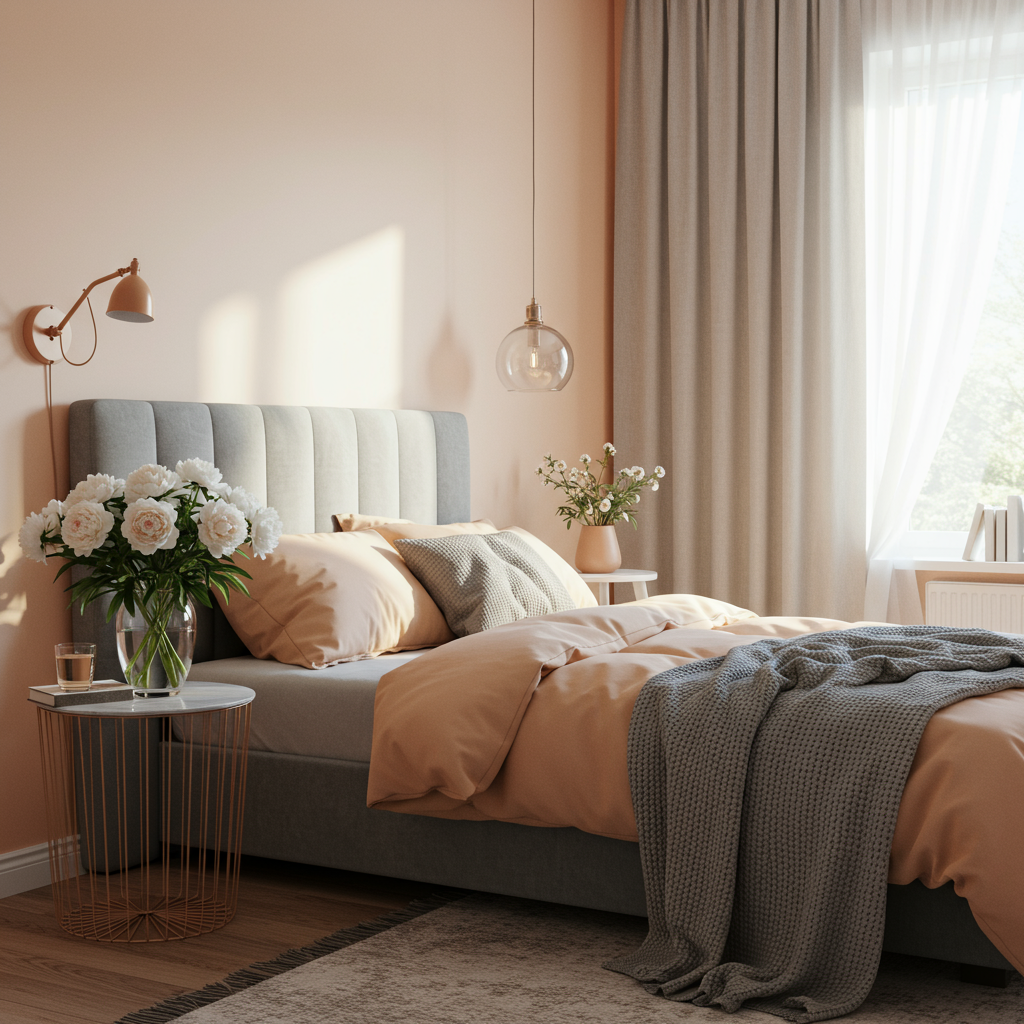Creating a peaceful bedroom retreat is essential for relaxation and rejuvenation. The colors you choose to decorate your sanctuary can significantly influence your mood, sleep quality, and overall sense of well-being. When selecting a color palette for your bedroom, it’s important to consider hues that promote tranquility and comfort. In this article, we’ll explore 12 harmonious color combinations that will help you design a serene and inviting space. Let’s dive in and discover how you can transform your bedroom into a peaceful retreat!
“`html
| Feature | Details |
|---|---|
| Color Palette | 12 curated color combinations |
| Emotional Impact | Colors chosen for their calming effects |
| Room Size Consideration | Suggestions for small and large bedrooms |
| Accent Colors | Guidance on pairing accent colors |
| Lighting Effects | Impact of natural and artificial light on colors |
| Texture Integration | Incorporating textures to enhance color schemes |
| Personalization Tips | Advice on customizing combinations to individual taste |
“`
1. Soft Blue and Cream

Soft blue is often associated with calmness and serenity, making it an ideal choice for a bedroom. Pairing it with cream adds a warm, inviting touch that enhances the tranquil vibe. This combination can create a soothing atmosphere, reminiscent of a clear sky and gentle clouds. Consider using soft blue for your walls and cream for your bedding and curtains. Add natural wooden accents to maintain a cozy and grounded feel.
2. Sage Green and White

Sage green is a muted, nature-inspired color that brings a sense of calm to any space. When combined with crisp white, this palette feels fresh and airy. Sage green walls can be complemented with white linens and decor to create a bright and peaceful environment. Incorporate plants to enhance the natural feel and promote a connection with nature.
3. Lavender and Gray
Lavender is a gentle and soothing color known for its relaxing properties. When paired with soft gray, it creates a sophisticated yet tranquil atmosphere. This combination works beautifully for a modern bedroom design. Use lavender for an accent wall or in your bedding, while opting for gray in your furniture or curtains. The result is a refined retreat that encourages rest and relaxation.
4. Dusty Rose and Charcoal
Dusty rose is a muted pink shade that evokes feelings of warmth and comfort. When combined with charcoal gray, it adds depth and sophistication to the bedroom. This color combination is perfect for creating a romantic ambiance. Consider using dusty rose for your bedspread and decorative pillows while keeping larger furniture pieces in charcoal for a balanced look.
5. Soft Yellow and Light Gray
Soft yellow brings a cheerful yet calming energy to your bedroom. When paired with light gray, it creates a balanced and uplifting atmosphere. This combination is perfect for those who desire a sunny, welcoming retreat without overwhelming brightness. Use soft yellow for accents like throw pillows and artwork, while keeping the walls a gentle light gray for a peaceful backdrop.
6. Aqua and Sandy Beige

Aqua is reminiscent of tranquil waters, making it an excellent choice for a calming bedroom. Paired with sandy beige, this combination evokes a beachy vibe that promotes relaxation. Aqua can be used on the walls or in your bedding, while sandy beige can serve as a neutral foundation for your furniture and accessories. This palette creates a serene and refreshing atmosphere that feels like a vacation getaway.
7. Mint Green and Off-White

Mint green is a refreshing and soothing color that embodies tranquility. When combined with off-white, it creates a light and airy environment. This color scheme is perfect for a minimalistic bedroom design, emphasizing simplicity and comfort. Consider using mint green for your walls and off-white for bedding and curtains. Add natural wood elements for warmth and a touch of coziness.
8. Pale Peach and Soft Gray

Pale peach is a gentle color that adds warmth and serenity to a bedroom. When paired with soft gray, it creates a harmonious and inviting atmosphere. This combination is particularly effective in creating a cozy retreat. Use pale peach for accent walls or bedding and soft gray for your furniture and decor to establish a calming balance.
9. Teal and Light Taupe
Teal is a rich color that can add depth and character to your bedroom while still maintaining a peaceful vibe. When combined with light taupe, it creates an elegant and balanced look. Teal can be used for an accent wall, while taupe works well for larger furniture pieces or textiles. This combination is perfect for those who want to make a statement while still keeping things calm and inviting.
10. Warm Beige and Olive Green
Warm beige is a versatile neutral that can serve as a perfect backdrop for any bedroom design. Paired with olive green, it creates a grounded and earthy feel. This combination is ideal for those who appreciate a natural aesthetic. Use warm beige for the walls and olive green for accents like throw blankets and decorative pillows to create a cohesive and peaceful retreat.
11. Coral and Soft Gray
Coral is a vibrant yet soft color that can energize your space while still promoting calmness. When paired with soft gray, it strikes a balance between liveliness and tranquility. Consider using coral for your bedding or artwork, and keep the walls in a soft gray for a light and airy feel. This combination is perfect for creating a stylish yet serene bedroom.
12. Light Lilac and Cream
Light lilac is a delicate color that adds a touch of elegance and calm to any bedroom. When combined with cream, it creates a soft and dreamy atmosphere. This combination works well for both modern and traditional bedroom designs. Use light lilac for your walls or bedding, while cream can be utilized in curtains and furniture to enhance the overall tranquility.
Choosing the Right Accents
While selecting the right color palette is crucial for establishing a serene bedroom environment, the accents you incorporate can significantly enhance the overall aesthetic. Accents include elements such as artwork, decorative pillows, throws, and even rugs. Here are some tips to ensure your accents complement your chosen color scheme:
- Consider Texture: Incorporating varying textures can add visual interest and comfort. For example, if you’ve chosen a soft blue and cream palette, think about adding knitted throws or velvet cushions in complementary shades to enrich the space.
- Use Artwork Wisely: Select artwork that reflects your color scheme while also conveying a sense of calm. Abstract pieces in soft hues or nature-inspired images can enhance the tranquility of the room.
- Layering Rugs: Rugs can be a great way to introduce additional colors or textures. Choose rugs that either match your palette or introduce a subtle pattern that doesn’t overpower the existing colors.
- Incorporate Natural Elements: Bringing in plants or natural wood accents can ground your color choices and introduce a sense of peace. Consider using planters or wooden shelves that tie into the overall palette.
Lighting Matters
The right lighting can dramatically alter the ambiance of your bedroom. Choosing fixtures that complement your color scheme not only enhances the aesthetic but also supports the tranquil atmosphere you’re aiming for. Here are some recommendations:
- Soft, Warm Light: Opt for light bulbs that emit a warm glow rather than harsh, bright light. This creates a softer environment that promotes relaxation.
- Layered Lighting: Use a combination of overhead lighting, bedside lamps, and floor lamps to create a versatile lighting scheme. Dimming options can also allow you to adjust the mood according to the time of day.
- Decorative Fixtures: Choose light fixtures that align with your style while complementing the color palette. For instance, a brass or gold fixture can add warmth to a cool-toned room.
Furniture Selection
When it comes to furniture, the choices you make can significantly impact the overall vibe of your bedroom. The materials, shapes, and colors of your furniture should align with your serene color palette. Consider the following tips:
- Choose Neutral Tones: For large furniture pieces, such as beds and dressers, consider neutral tones that create a calming backdrop. Soft whites, beiges, or light grays can provide a versatile foundation.
- Incorporate Curved Lines: Furniture with rounded edges tends to create a softer, more relaxing atmosphere than angular pieces. Look for beds, chairs, and tables that have gentle curves.
- Mix Vintage with Modern: Combining vintage and modern furniture can create a unique character in the room while maintaining a cohesive color scheme. Vintage pieces in muted tones can add charm and warmth.
Textiles and Fabrics
Textiles can significantly contribute to the comfort and aesthetic of your bedroom. From bedding to curtains, the fabrics you choose should harmonize with your color palette and enhance the serene environment. Here are some suggestions:
- Soft Bedding: Invest in high-quality, soft fabrics such as cotton or linen for your bedding. These materials not only feel luxurious against your skin but also contribute to the overall tranquility of the space.
- Layering Textiles: Layering different materials can add depth and comfort. Combine a duvet with a lightweight throw blanket and textured pillows to create an inviting bed.
- Window Treatments: Light, flowing curtains in a complementary color can soften the room while allowing natural light to filter through. Consider sheer fabrics that provide privacy without blocking out too much light.
Personal Touches
Injecting your personality into your bedroom design is essential for creating a true retreat. Personal touches make the space feel uniquely yours and contribute to your overall comfort. Here are some ideas for adding personal flair:
- Display Personal Mementos: Incorporate framed photos or cherished items that bring you joy. This can create a warm and inviting feel, making your bedroom a reflection of your life.
- Customizable Decor: Consider decorative items that can be easily changed out or updated. This allows you to refresh the space periodically without major overhauls.
- Incorporate Meaningful Art: Hang artwork that resonates with you, whether it’s pieces you’ve collected during travels or works from local artists. This adds an emotionally enriching layer to your bedroom.
Creating a Calming Atmosphere with Scents
In addition to visual aesthetics, the scents in your bedroom can significantly influence your mood and relaxation levels. Aromatherapy is a powerful tool to enhance your bedroom’s calming atmosphere. Here are some ways to incorporate soothing scents into your space:
- Scented Candles: Choose candles in soft, natural scents such as lavender, chamomile, or sandalwood. Lighting a candle before bedtime can create a warm, inviting ambiance while also providing a calming aroma. Opt for organic candles made from soy or beeswax to minimize toxins in your environment.
- Essential Oil Diffusers: Invest in an essential oil diffuser to disperse calming scents throughout your bedroom. Popular choices for promoting relaxation include lavender, eucalyptus, and citrus oils. You can also experiment with blends to find the perfect scent that resonates with you.
- Fresh Flowers: A vase of fresh flowers can add both beauty and fragrance to your bedroom. Choose flowers like jasmine or peonies, which are known for their pleasant scents. Just be sure to replace them regularly to avoid any unpleasant odors as they wilt.
- Herbal Sachets: Fill small fabric bags with dried herbs such as lavender, rosemary, or chamomile and place them in your drawers or closets. These sachets can help keep your linens smelling fresh and contribute to a soothing atmosphere when you enter your bedroom.
Soundscapes for Serenity
Creating a peaceful auditory environment can also enhance your bedroom’s tranquility. The sounds in your space can either promote relaxation or cause stress, so it’s important to curate your auditory surroundings. Here are a few tips to achieve a calming soundscape:
- Soft Background Music: Play soft instrumental music or nature sounds to create a serene ambiance. Choose playlists designed for relaxation or meditation to help set the mood for winding down at the end of the day.
- White Noise Machines: If you live in a noisy area, consider using a white noise machine to mask disruptive sounds. These devices can help create a consistent sound environment that promotes deeper sleep.
- Nature Sounds: Incorporate recordings of gentle rain, ocean waves, or rustling leaves as part of your bedtime routine. These natural sounds can help reduce stress and anxiety, making it easier to relax.
- Mindfulness Practices: Engage in mindfulness practices that involve sound, such as guided meditations or sound baths. These practices can help center your mind and prepare you for a restful night.
Color Psychology and Its Impact on Sleep
Understanding color psychology can further enhance your bedroom’s calming influence. Colors can evoke emotions and even affect your sleep quality. Here are some insights into how different colors might impact your mood and rest:
- Blue: Studies have shown that blue light can help promote a sense of calm and is often associated with tranquility. It’s a great choice for bedrooms, as it can lower heart rates and reduce anxiety.
- Green: Representing nature and renewal, green hues can create a peaceful atmosphere conducive to relaxation. It helps in reducing fatigue and is linked to feelings of balance.
- Pale Colors: Lighter shades such as pastels can create an airy and spacious feeling, making the room feel open and inviting. These colors are less stimulating and can help you unwind.
- Warm Neutrals: Soft browns, beiges, and taupes can create a cozy and grounded feeling. These colors are particularly effective for creating a comfortable, retreat-like atmosphere.
Maintaining a Clutter-Free Sanctuary
A cluttered space can lead to a cluttered mind, making it difficult to relax. Keeping your bedroom organized and clutter-free is essential for maintaining a peaceful retreat. Here are some practical tips for achieving an orderly environment:
- Regular Decluttering: Set aside time every few months to go through your belongings. Donate or discard items you no longer need or use. A minimalist approach can help you keep only what truly brings you joy and comfort.
- Storage Solutions: Invest in decorative storage options that blend with your decor. Baskets, under-bed storage, and multi-functional furniture can help keep items organized while enhancing the overall aesthetic of your space.
- Designated Spaces: Create designated areas for specific items, such as a nightstand for books and essentials or a corner for workout gear. Having a place for everything can reduce the likelihood of clutter accumulating.
- Daily Tidying Routine: Develop a daily tidying habit to maintain order. Spend a few minutes each day making your bed and putting away items to ensure your sanctuary remains inviting and stress-free.
Investing in Quality Sleep
Ultimately, the goal of your bedroom transformation is to create a space that promotes restful sleep. Investing in high-quality sleep essentials can significantly impact your overall well-being. Here are some recommendations to enhance your sleep quality:
- Comfortable Mattress: Ensure your mattress meets your comfort preferences. Whether you prefer memory foam, innerspring, or hybrid options, investing in a quality mattress can make a world of difference in your sleep experience.
- Supportive Pillows: Choose pillows that provide the right level of support for your sleeping style, whether you’re a back, side, or stomach sleeper. The right pillow can help reduce neck and back pain, leading to more restful sleep.
- High-Quality Linens: Opt for breathable, soft sheets made from materials like cotton or bamboo. The feel of your linens against your skin can greatly influence your comfort level while sleeping.
- Sleep Masks and Earplugs: If your bedroom is exposed to light or noise, consider using sleep masks or earplugs to create a more conducive sleeping environment. These simple additions can help block out distractions.
